Ksenia velum DT + AM User And Installer Manual
- Catégorie
- Chauffe-eau
- Taper
- User And Installer Manual

Rilevatore di Movimento
Doppia Tecnologia (DT)
Filare
a Tenda per Esterno
con Antimascheramento (AM)
www.kseniasecurity.com
Wired
Outdoor Curtain
Dual Technology (DT)
Motion Detector
with Anti-masking (AM)
KSI5302010.303
câblé
bidirectionnelle
rideau d’extérieur
Double technologie (DT)
Détecteur de mouvement
Anti-masquage (AM)

INDICE - INDEX
INTRODUZIONE ...................................................................................................................................................... 3
DATI TECNICI .........................................................................................................................................................3
IDENTIFICAZIONE DELLE PARTI .............................................................................................................................4
DESCRIZIONE PCB ................................................................................................................................................. 4
ASSEMBLAGGIO ...................................................................................................................................................5
SEQUENZA LED ......................................................................................................................................................6
CABLAGGIO .........................................................................................................................................................6
PROGRAMMAZIONE ............................................................................................................................................7
REGOLAZIONE MICROONDA ..............................................................................................................................8
ANALISI ANTIMASCHERAMENTO .........................................................................................................................8
ANALISI ANTISTRAPPO ..........................................................................................................................................8
DIAGRAMMA DI COPERTURA .............................................................................................................................9
SOSTITUZIONE LENTE DI FRESNEL ........................................................................................................................10
CERTIFICAZIONI ................................................................................................................................................... 27
INTRODUCTION ...................................................................................................................................................11
TECHNICAL DATA ...............................................................................................................................................11
PARTS DESCRIPTION............................................................................................................................................12
PCB DESCRIPTION ............................................................................................................................................... 12
ASSEMBLY ............................................................................................................................................................13
LED MEANING .....................................................................................................................................................14
WIRING ................................................................................................................................................................14
PROGRAMMING ................................................................................................................................................. 15
MICROWAVE SETTINGS ......................................................................................................................................16
ANTI-MASKING ANALYSIS ................................................................................................................................... 16
TAMPER ANALYSIS...............................................................................................................................................16
COVERAGE DIAGRAM.......................................................................................................................................17
CHANGE FRESNEL LENS ...................................................................................................................................... 18
CERTIFICATIONS ..................................................................................................................................................27
INTRODUCTION ...................................................................................................................................................18
DONNÉES TECHNIQUES ......................................................................................................................................19
DESCRIPTION DU MATÉRIEL ................................................................................................................................ 20
DESCRIPTION DE LA CARTE MÈRE .....................................................................................................................20
ASSEMBLAGE.......................................................................................................................................................21
LE SENS DES LED ..................................................................................................................................................22
CÂBLAGE ...........................................................................................................................................................22
PROGRAMMATION .............................................................................................................................................23
PARAMÉTRAGE DU MICRO ONDES ..................................................................................................................24
ANALYSE SABOTAGE ..........................................................................................................................................24
INHIBITION DU STATUT DE L’APPAREIL ...............................................................................................................24
DIAGRAMME DE COUVERTURE .........................................................................................................................25
CHANGEMENT FRESNEL LENS ...........................................................................................................................26
CERTIFICATIONS .................................................................................................................................................27

IT
3
INTRODUZIONE
Vi ringraziamo per aver acquistato il nostro prodotto. I sensori della serie velum DT-AM grazie alle
dimensioni particolarmente ridotte sono particolarmente indicati nella protezione di porte, nestre
e vetrine, grazie ai materiali impiegati ad alla tecnologia evoluta, può essere utilizzato in qualsiasi
installazione all’aperto dove si renda necessaria la copertura di aree ben denite, ad esempio pareti.
Il sensore crea una copertura a tenda con angolo di 7.5° ed ha una portata regolabile no a 12 metri.
I materiali con cui sono realizzati i sensori sono particolarmente resistenti agli agenti atmosferici
ed il contenitore è completamente stagno. La scheda elettronica viene, inoltre, sottoposta ad un
processo di tropicalizzazione per assicurarne un corretto funzionamento in ogni condizione di umidità
e temperatura.
L’accurata progettazione e l’analisi digitale del segnale della microonda rendono questi sensori
particolarmente stabili ed immuni ai falsi allarmi.
Il mascheramento della lente di infrarosso viene effettuata utilizzando un analisi a led infrarossi attivi.
I sensori a tenda da esterno della serie velum DT-AM sono sinonimo di afdabilità ed elevata sicurezza,
non solo dal punto di vista qualitativo, ma anche contro i tentativi di sabotaggio, visto che possiede
una unità MEMS per antistrappo e un microinterruttore contro l’apertura frontale
DATI TECNICI
• Alimentazione: standard 12V, max 14V.
• Assorbimento massimo: 30mA.
• Sensore IR: doppio elemento.
• Portata IR: 12m (temperatura ambiente 25°C).
• Tempo di riscaldamento IR: 60 sec.
• Frequenza operativa MW: 24.125GHz.
• Portata MW: 12m.
• Analisi Antimasking: sia per microonda che per infrarosso (led infrarossi attivi).
• Antistrappo: MEMS (Accelerometro).
• Sabotaggio: microinterruttore frontale.
• Range temperatura operativa: da -20°C a +55° C.
• Immunità RFI/EMI: 20 V/m, 10-1000 MHz;10 V/m, 1-2 GHz.
• Immunità luce bianca: 6500 lux.
• Portata MW: regolabile tramite trimmer.
• Portata PIR: regolabile tramite trimmer
• Analisi al controllo antistrappo: abilitazione via DIP-SWITCH.
• Analisi antimasking: abilitazione via DIP-SWITCH.
• Led di segnalazione: RGB a cinque colori, disattivabile via DIP-SWITCH.
• Resistenze di ne linea: triplo bilanciamento 10Kohm parallelo (abilitabili tramite DIP-SWITCH)
integrate su PCB.
• Zona di rilevazione: unica a tenda (angolo da 7,5°).
• Copertura:
orizzontale: IR 7,5°, MW 32°.
verticale: IR 90°, MW 80°. (lente standard)
verticale: IR 15°, MW 80°. (lente Pet Immune)
• Ampiezza tenda: a 2m 25cm, a 10m 130cm.
• Distanza di rilevazione: da 0.30m a 12m.
• Altezza installazione: 2.10m
• Altezza installazione con lente Pet Immune: 0,8 / 1,2 m
• Montaggio: con staffa ad angolo(reversibile) e a parete.
• Materiale custodia e staffe: ABS.
• Dimensioni: 38 x 129 x 40 mm ( L x H x P )
con staffa a parete: 45 x 129 x 40 mm
con staffa angolare: 45 x 129 x 45 mm
• Peso: 90g.
• Grado protezione: IP54.
• Colore: grigio.

IT
4
IDENTIFICAZIONE DELLE PARTI
1
2
3
4 5
6
7
8
1. Staffa di montaggio angolare reversibile.
2. Staffa di montaggio a parete.
3. Fondo.
4. PCB.
5. Coperchio.
6. Coprivite frontale.
7. Diffusore LED RGB.
8. Lente di Fresnel
Kit di montaggio:
• N° 2 stop.
• N° 2 viti per stop.
• N° 2 viti per montaggio supporto angolare o piatto.
• N° 1 copri vite frontale.
• N° 1 cacciavite per morsettiera e espulsione copri vite frontale.
ONON
1234
A
A
F
I
T
T
1
3
68
5
2
10
4
7
9
11
12
1.1
DESCRIZIONE PCB
1. Morsettiera (in senso orario):
1.1 Alimentazione (+,-).
1.2. Allarme sabotaggio (T,T) (nc). Relè stato solido
1.3. Ingresso per inibizione stato impianto da remoto (I).
1.4. Morsetto guasto (F) (nc). open collector con secondo
morsetto in comune su morsetto (-)
1.5. Allarme (A,A) (nc). Relè stato solido
Note:
• Tutte le zone (uscite) sono normalmente chiuse (nc).
• Ingresso inibizione stato impianto (I).
è utilizzato per abilitare/disabilitare il LED da remoto.
• Uscita guasto (F) segnala:
- Mascheramento.
- Guasto su analisi interne (tensioni, rotture, etc...).
- Guasto per normative EN50131-2-4 Grado 3.
2. Microcontrollore.
3. Dip switch:
3.1. Abilitazione LED RGB.
3.2. Abilitazione analisi antimasking frontale.
3.3. Abilitazione gestione antistrappo.
3.4. abilitazione delle resistenze di ne linea,
utilizzate con centrali della serie lares.
4. Sezione MEMS. (accelerometro).
5. Microinterruttore frontale.
6. Led segnalazione RGB a 5 colori.
7. Trimmer regolazione microonda (MW).
8. Trimmer regolazione infrarosso (IR).
9. Modulo microonda.
10. Modulo infrarosso.
11. Led infrarossi per analisi antimasking.
12. Foro di ssaggio PCB.

IT
5
ASSEMBLAGGIO
STAFFA DI MONTAGGIO ANGOLARE REVERSIBILE STAFFA DI MONTAGGIO A PARETE
12
Montaggio con staffa ad angolo:
• Bloccare a parete la staffa angolare (1).
• Avvitare alla staffa il fondo sensore (2).
• Eseguire i cablaggi per ottenere le segnalazioni
desiderate.
• Avvitare PCB su fondo con apposita vite.
• Chiudere e avvitare il coperchio (3).
• Inserire il coprivite frontale (4).
Montaggio con staffa a parete:
• Bloccare a parete la staffa piatta (1).
• Avvitare alla staffa il fondo sensore (2).
• Eseguire i cablaggi per ottenere le
segnalazioni desiderate.
• Avvitare PCB su fondo con apposita vite.
• Chiudere e avvitare il coperchio (3).
• Inserire il coprivite frontale (4).
Per una corretta installazione a parete, utilizzare le due tipologie di staffa incluse nella confezione:

IT
6
CABLAGGIO UNIVERSALE
A
A
F
I
T
T
ALLARME
(NC)
USCITA
GUASTO SABOTAGGIO
(NC)
12 Vdc
( - ) ( + )
{
CABLAGGIO
OPZIONALE
INIBIZIONE
STATO IMPIANTO
NOTE: Tagliare i li della lunghezza adeguata e cablare come in gura:
CABLAGGIO Ksenia
A
A
F
I
T
T
ZONA BILANCIATA
CON RESISTENZE DI
FINE LINEA
( - ) ( + )
{
CABLAGGIO
OPZIONALE
INIBIZIONE
STATO IMPIANTO
12V IN
lares
M1
M2
12 Vdc
Il sensore integra delle resistenza di bilanciamento per una rapida installazione con centrali della
serie lares.
Per utilizzarlo, abilitare il DIP-SWITCH “4” ed effettuare il cablaggio come riportato in gura.
In fase di programmazione (basis) indicare “triplo bilanciamento parallelo 10k”.
Le resistenze di ne linea sono abilitabili, come detto sopra, utilizzando il DIP-SWITCH “4”,
e rispettano il seguente schema:
R1 R2 R3
T M A
i/M
T = Tamper
M = Mascheramento
A = Allarme

IT
7
SEQUENZA LED
COLORE LED RIFERIMENTO
VERDE ACCESO FISSO Rilevazione IR senza allarme
BLU
ACCESO FISSO Rilevazione MV senza allarme
ROSSO ACCESO FISSO Rivelazione Allarme ( IR & MW )
BLU LAMPEGGIANTE Rilevazione Mascheramento
BIANCO LAMPEGGIANTE Fase di Riscaldamento/Calibrazione
NOTE:
La fase di riscaldamento dura al massimo 60 secondi a fronte del cambiamento di un DIP- SWITCH
o prima accensione.
Anche se lo stato impianto (LED) è disabilitato tramite DIP 1 o ingresso “I” in caso di mascheramento
il LED lampeggerà di colore blu.
PROGRAMMAZIONE
DIP SWITCH FUNZIONALITÀ
LED ON > Accensione LED per segnalazione STATO / EVENTI
ANTIMASKING
RESISTENZE FINE LINEA
ANALISI ANTISTRAPPO
OFF > LED Sempre spento
ON > Analisi antimascheramento frontale abilitata
OFF > Analisi disabilitata
ON > Abilitazione analisi antistrappo tramite piattaforma MEMS
OFF > Disabilitazione analisi
ON > Resistenze di ne linea per cablaggi con centrali della serie lares,
presenti su morsetto antisabotaggio (T,T )
OFF > Resistenze di ne linea NON ABILITATE
ON
1
2
3
4
DIP SWITCH
FUNZIONALITÀ PROGRAMMABILI
Congurazione di default ( ON / ON /ON / OFF )
Note: Tempi di calibrazione circa 60 secondi
NOTE: Dopo abilitazione/disabilitazione delle funzionalità, non è richiesto spegnimento e
riaccensione del dispositivo.
Dopo la commutazione dei DIP SWITCH 2 o 3, riparte la fase di riscaldamento/calibrazione
segnalata dal LED bianco lampeggiante .

IT
8
INGRESSO INIBIZIONE STATO IMPIANTO
REGOLAZIONE MICROONDA
FUNZIONAMENTO DELL’ANALISI ANTIMASCHERAMENTO
Per regolare la sensibilità/portata della microonda e infrarosso girare il trimmer con un giravite di
piccole dimensioni.
Girando verso destra la grandezza controllata verrà aumentata.
Girando verso sinistra la grandezza controllata verrà diminuita.
L’ analisi del antimascheramento è abilitabile e disabilitabile utilizzando il DIP-SWITCH 2.
Quando il DIP-SWITCH ha valore ON, se un mascheramento è rilevato viene chiuso
il relè in corrispondenza del morsetto F (mascheramento/guasto).
L’analisi del mascheramento considera entrambe le grandezze:
• Microonda
• Infrarosso
Nota: nel caso particolare dell’infrarosso, l’analisi è eseguita da LED ad infrarossi attivi.
FUNZIONAMENTO DELL’ANALISI ANTISTRAPPO
All’accensione del sensore la piattaforma inerziale (MEMS) si tara per la posizione acquisita, con
spostamenti di 3-4 gradi genera un allarme sull’uscita di sabotaggio (T-T).
Subito dopo un rilevamento di spostamento, il sensore inerziale si tara nuovamente sulla posizione
corrente.
• Per disabilitare lo stato impianto fornire 12V all’ingresso “I”.
• Nel passaggio da 12V a 0V (abilitazione utilizzo del LED) se si ha una memoria legata al sistema
Antimask e/o Accelerometro il sensore esegue una calibrazione.
• Tale ingresso ha priorità rispetto al DIP-SWITCH 1.
USCITA GUASTO/MASCHERAMENTO
• In caso di “Guasto/Mascheramento” viene attivata tale uscita “F”.
• In corrispondenza di Mascheramento oltre all’attivazione dell’uscita “F” si avrà anche il
lampeggio del LED di stato.
• In caso di resistenze di ne linea (EoL) Ksenia il guasto viene segnalato con il relativo
bilanciamento.
AUMENTERE
DIMINUIRE
Figura 1
WALK TEST
La procedura di Walk TEST si attiva subito dopo un periodo di riscaldamento/calibrazione, ed ha una
durata massima di circa 10 minuti. In questo periodo di tempo è possibile effettuare un test di
copertura della microonda e dell’infrarosso, con l’ausilio del LED (RGB).
Per interpretare i colori che assume il Led in questa fase, fare riferimento all’apposita sezione. Pag. 7
Nota: durante il Walk TEST, anche se lo stato impianto/LED è disabilitato (Tramite DIP-SWITCH o ingresso I)
il LED verrà acceso a seconda della grandezza che rileverà un movimento.

IT
9
DIAGRAMMA DI COPERTURA
2
4
6
8
10
12
1 2 3 41234
2
4
6
8
10
12
0
FOV - Campo visivo
FOV - Fieled View
FOV - Champ de vision
Area di rivelazione microonde
Microwave detection area
Zone de détection micro-odes
SEZIONE
PIANTA
Zona di rilevazione: unica a tenda (angolo da 7,5°).
Ampiezza tenda: a 2m 25cm, a 10m 130cm.
Distanza di rilevazione: da 0.30m a 12m.
Altezza installazione: 2.10m su parete, o interno al vano insso
Copertura orizzontale (pianta): IR 7,5° , MW 32°.
Copertura verticale (Sezione): IR 90°, MW 80°.
120 6 10842
1.0
2.10
0,30
Corto Raggio
Short Range
Rayon Court
Medio Raggio
Medium Range
Rayon Moyen
Lungo Raggio
Long Range
Rayon Large
Area di rilevazione
microonde
Microwave
Detection Area
Zone de
Détection
Micro-ondes
120 6 10842
1.0
Area di rilevazione
microonde
Microwave
Detection Area
Zone de
Détection
Micro-ondes
Copertura con lente standard
SEZIONE
Copertura P.I.
Copertura orizzontale (Sezione): IR 90°, MW 80°.
Copertura orizzontale lente Pet Immune (Sezione): IR 15°, MW 80°

IT
10
Informazioni sullo smaltimento per gli utenti (Direttive RAEE)
Attenzione: Per smaltire il presente dispositivo, non utilizzare il normale bidone della spazzatura!
Le apparecchiature elettriche ed elettroniche usate devono essere gestite a parte e in conformità alla legislazione che
richiede il trattamento, il recupero e il riciclaggio adeguato dei suddetti prodotti.
In seguito alle disposizioni attuate dagli Stati membri, i privati residenti nella UE possono conferire gratuitamente le
apparecchiature elettriche ed elettroniche usate a centri di raccolta designati* o al rivenditore locale che può ritirare
gratuitamente se l’utente acquista un altro prodotto nuovo di tipologia simile.
Se le apparecchiature elettriche o elettroniche usate hanno batterie o accumulatori, l’utente dovrà smaltirli a parte
preventivamente in conformità alle disposizioni locali.
Lo smaltimento corretto del presente prodotto contribuirà a garantire che i riuti siano sottoposti al trattamento, al
recupero e al riciclaggio necessari prevenendone il potenziale impatto negativo sull’ambiente e sulla salute umana,
che potrebbe derivare da un’inadeguata gestione dei riuti.
Sono previste sanzioni molto elevate nel caso di irregolarità nel rispetto del D.Lgs 151/05.
* Per maggiori informazioni si prega di contattare l’autorità locale competente.
L’installazione di queste apparecchiature deve essere effettuata a regola d’arte, in accordo con le norme vigenti.
Queste apparecchiature sono state sviluppate secondo criteri di qualità, afdabilità e prestazioni adottati dalla Ksenia
Security.
Si raccomanda di vericare il corretto funzionamento del sistema almeno una volta al mese. Le procedure per il
collaudo dipendono dalla congurazione del sistema.
Rivolgersi all’installatore del sistema per conoscere le procedure da seguire.
Ksenia Security Srl declina ogni responsabilità nel caso in cui le apparecchiature vengano manomesse da personale
non autorizzato. Il contenuto di questo manuale può essere soggetto a modiche, senza preavviso, e non rappresenta
un impegno da parte della KSENIA SECURITY.
SOSTITUZIONE LENTE DI FRESNEL
1) Per sostituire la lente di Fresnel, spingere nella parte superiore della stessa no provocarne lo
sgancio g.9 Pag 4.
2) Inserire la lente con il ltro PET IMMUNE rivolto verso il basso, bloccando le estremità all’interno
degli appositi dentini di ancoraggio.
Nota: la parte visibilmente oscurata va necessariamente rivolta verso l’interno del coperchio del
rilevatore velum Fig.5 Pag 4.

EN
11
INTRODUCTION
We are very glad for your purchase.
The velum DT-AM detectors, due to their small form factor, are particularly suitable for doors and
windows protection; high quality materials and improved technology make these detectors
appropriate in outdoor environments where the coverage of dened areas, like vertical walls, is
needed.
These detectors implement a curtain coverage with an angle of about 7.5° and they have a
trimmable range up to 12 meters.
The fabrication materials are weatherproof and the plastic housing is sealed. The PCB board is treated
with epoxy resin to ensure its correct working in every humidity and temperture condition.
The accurate design and the digital signal processing of microwave make these sensors very stable
and prevent from false alarms.
The anti-mask process has been implemented usign active IR LEDs.
The anti-tamper reliability is ensured by a MEMS unit and a frontal switch which make the velum DT-AM
detectors synonym of reliability and high security, not only from a quality point of view.
TECHNICAL DATA
• Power Supply: 12V - 14V.
• Maximum consumption: 30mA
• IR Sensor: double element.
• IR Range: 12m (room temperature 25°C - 77°F).
• IR Warm-up time: 60 sec.
• MW Operating Frequency: 24.125GHz.
• MW Range: 12m.
• Anti-masking Analysis: both microwave and Infrared (Active Infrared LED).
• Tamper: MEMS systems. (Accelerometer)
• Sabotage: microswitch. (front cover)
• Operating Temperature Range: -20°C up to +55° C (-4°F up to 131°F).
• RFI/EMI Immunity: 20 V/m, 10-1000 MHz;10 V/m, 1-2 GHz.
• White Light Immunity: 6500 lux.
• MW Range: adjustable via trimmer.
• PIR Range: adjustable via trimmer
• Tamper Analysis via MEMS: Selectable by DIP-SWITCH.
• Anti-masking Analysis: Selectable by DIP-SWITCH.
• Signaling LED: ve colors RGB, Selectable by DIP-SWITCH.
• End of line Resistors: Embedded triple balancing 10kohm in parallel (Selectable by DIP-SWITCH)
• Point of Detection: Single, Curtain beam (Angle 7,5°).
• Range of work:
horizontal: IR 7,5° , MW 32°.
vertical: IR 90°, MW 80°. (with standard lens)
vertical: IR 15°, MW 80°. (with Pet Immune lens)
• Width of Covered area: 25cm at 2m of distance,130cm at 10m.
• Detection distance: 0.30m up to 12m.
• Installation height: 2.10m
• Installation height: with Pet Immune lens 0,8 / 1,2 m
• Assembly: with angle bracket (reversible) or on the wall.
• Housing and bracket Material: ABS.
• Dimensions: 38 x 129 x 40 mm ( W x H x D )
with wall Bracket: 45 x 129 x 40 mm ( W x H x D )
with angle Bracket: 45 x 129 x 45 mm ( W x H x D )
• Weight: 90g.
• Protection grade: IP54.
• Color: Grey.

EN
12
PARTS DESCRIPTION
1
2
3
4 5
6
7
8
ONON
1234
A
A
F
I
T
T
1
3
68
5
2
10
4
7
9
11
12
1.1
PCB DESCRIPTION
1. Terminals (clockwise):
1.1 Supply (+,-).
1.2 Tamper (T,T) solid state relay
1.3 Input for remotely inhibition (I)
1.4 Fault and mask output (F) (nc) open collector with the
second terminal in common to terminal (-)
1.5 Alarm (A,A) solid state relay
Notes:
• Input (I)
is used to enable / disable the LED remotely
• Fault output (F) Signals:
- Masking
- Failure of internal analysis (voltage, self diagnostic, etc...)
2. Micro-controller.
3. Dip switches:
3.1. Switch on Led RGB.
3.2. Switch on front anti masking analysis.
3.3. Switch on tamper analysis via MEMS
3.4. Switch on the EOL resistors,
for lares series control panels.
4. MEMS systems. (Accelerometer)
5. Front Microswitch
6. Indicator ve colors RGB LED.
7. Microwave trimmer adjustment (MW)
8. Infrared trimmer adjustment (IR)
9. Microwave Sensor.
10. Infrared Sensor
11. Infrared LED for Anti-masking Analysis.
12. PCB Fixing hole.
1. Angular Mounting Bracket, reversible
2. Wall Mounting Bracket
3. Bottom
4. PCB
5. Front Cover
6. Screw Cover
7. LED lens
8. Fresnel lens
Installation kit:
• N° 2 Dowels.
• N° 2 Dowels for screw.
• N° 2 Screws for installing the bottom on the Bracket or wall.
• N° 1 Screw Cover.
• N° 1 screwdriver.

EN
13
ASSEMBLY
REVERSIBLE ANGLE BRACKET FLAT BRACKET
12
Installation with at bracket:
• Fix on the wall the at bracket (1)
• Fix the cover bottom on the bracket (2)
• Wire the PCB at your needs.
• Fix the PCB on the bottom with included screw.
• Close and x the front cover with included screw (3).
• Insert the cover for external screw (4).
For a correct wall installation, it is possible to use the two different brackets included in the kit:
Installation with angular bracket:
• Fix on the wall the angular bracket (1).
• Fix the cover bottom on the bracket (2).
• Wire the PCB at your needs.
• Fix the PCB on the bottom with included screw.
• Close and x the front cover with included screw (3).
• Insert the cover for external screw (4).

EN
14
STANDARD WIRING
A
A
F
I
T
T
ALARM
(NC)
FAULT
OUTPUT
TAMPER
(NC)
12 Vdc
( - ) ( + )
{
OPTIONAL
WIRING
INHIBITION
SYSTEM STATUS
Ksenia WIRING
A
A
F
I
T
T
( - ) ( + )
{
lares
M1
M2
12 Vdc
OPTIONAL
WIRING
INHIBITION
SYSTEM STATUS
12V IN
BALANCED ZONE
WITH RESISTANCE
END OF LINE
The End of Line resistors are enabled with the DIP SWITCH “4” and have the values as shown in the
gure:
R1 R2 R3
T M A
i/M
T = Tamper
M = Masking
A = Alarm
NOTE: Cut the wires of an appropriate length and connect as shown in the gure:
The detectors integrate some balancing resistors for a fast installation with lares control panels.
To use them, enable the DIP_SWITCH “4” and wire as shown in the gure.
On lares programming select triple balancing parallel 10k

EN
15
LED COLORS MEANING
GREEN FIX IR Detection without alarm
BLUE FIX MV Detection without alarm
RED FIX Alarm Detection ( IR & MW )
BLUE FLASHING Masking detection
WHITE FLASHING Phase Heating / Calibration
NOTE:
The heating phase lasts at most 60 seconds, and it starts at power up or toggling a DIP SWITCH.
Even if the system status (LED) is disabled through DIP 1 or input “I”, in case of masking
the LED will blink a blue color.
LED MEANING
PROGRAMMING
DIP SWITCH FUNCTIONALITY
LED ON > Enable LED for signaling STATE / EVENTS
ANTIMASKING
END OF LINE RESISTORS
TAMPER ANALYSIS
OFF > LED Always O
OFF > Disable antimask
ON > Enable tamper via MEMS
OFF > Disable tamper via MEMS
ON > End of Line Resistors for wiring to lares series control panel
OFF > End of Line Resistors NOT ENABLED
ON
1
2
3
4
DIP-SWITCH
Programmable Functionality
Default Conguration ( ON / ON /ON / OFF )
Note: Calibration Time about 60 seconds
ON > Enable antimask
NOTE: After enabling/disabling one functionality, it is not necessary to restart the detector.
After toggling DIP SWITCH 2 or 3 , the phase of Heating/Calibration starts, highlighted by the LED
blinking white.

EN
16
INHIBITION SYSTEM STATUS INPUT
MICROWAVE SETTINGS
ANTI-MASKING ANALYSIS
To adjust the microwave sensibility/range, you can rotate the trimmer with a little screwdriver.
Turning clockwise, the sensibility of microwave will be increased.
Turning counter-clockwise, the sensibility of microwave will be decreased
Enabling /disabling of anti-masking analysis is possible with DIP-SWITCH “2”
When the DIP-SWITCH is in ON, the detection of a masking event makes the open collector output “F”
closed.
The analysis considers of both variables:
• Microwave
• Infrared
Note: In the particular case of the infrared, the analysis is performed by an active infrared LED.
TAMPER ANALYSIS
All’accensione del sensore la piattaforma inerziale (MEMS) si tara per la posizione acquisita, con
spostamenti di 3-4 gradi genera un allarme sull’uscita di sabotaggio (T-T).
Subito dopo un rilevamento di spostamento, il sensore inerziale si tara nuovamente sulla posizione
corrente.
• Per disabilitare lo stato impianto fornire 12V all’ingresso “I”.
• Nel passaggio da 12V a 0V (abilitazione utilizzo del LED) se si ha una memoria legata al sistema
Antimask e/o Accelerometro il sensore esegue una calibrazione.
• Tale ingresso ha priorità rispetto al DIP-SWITCH 1.
FAULT / MASKING OUTPUT
• In caso di “Guasto/Mascheramento” viene attivata tale uscita “F”.
• In corrispondenza di Mascheramento oltre all’attivazione dell’uscita “F” si avrà anche il
lampeggio del LED di stato.
• In caso di resistenze di ne linea (EoL) Ksenia il guasto viene segnalato con il relativo
bilanciamento.
WALK TEST
The Walk test procedure starts immediately after the Heating / calibration time, for maximum 10
minutes.
During this time it’s possible to test the coverage of microwave and infrared, using the RGB LED.
Please refer to page15 for LED reference.
Note: during the walk Test, the LED is always enabled (regardless the DIP SWITCH / “I” input settings).
INCREASE
DECREASE
image 1

EN
17
COVERAGE DIAGRAM
Horizontal coverage (LATERAL VIEW): IR 7,5° , MW 32°.
Vertical coverage (TOP VIEW): IR 90°, MW 80°.
Detection zone: single curtain (angle of 7,5°).
Curtain extent: to 2m 25cm, to 10m 130cm.
Detection range: to 0.30m to 12m.
Mounting height: 2.10m on the wall, or the frame inside of windows.
2
4
6
8
10
12
1 2 3 41234
2
4
6
8
10
12
0
FOV - Campo visivo
FOV - Fieled View
FOV - Champ de vision
Area di rivelazione microonde
Microwave detection area
Zone de détection micro-odes
LATERAL VIEW
TOP VIEW
120 6 10842
Zona di supervisione
Supevised Zone
Zone Sécurisée
1.0
2.20
0,30
Corto Raggio
Short Range
Rayon Court
Medio Raggio
Medium Range
Rayon Moyen
Lungo Raggio
Long Range
Rayon Large
Area di rilevazione
microonde
Microwave
Detection Area
Zone de Détection
Micro-ondes
120 6 10842
1.0
Area di rilevazione
microonde
Microwave
Detection Area
Zone de
Détection
Micro-ondes
Standard lens coverage
LATERAL VIEW
Copertura P.I.
Horizontal coverage (LATERAL VIEW): IR 90°, MW 80°.
Horizontal coverage with Pet Immune lens : IR 15°, MW 80°

EN
18
Installation of these systems must be carried out strictly in accordance with the instructions described in this manual, and
in compliance with the local laws and bylaws in force. this product have been designed and made with the highest
standards of quality and performance adopted by Ksenia Security. Is recommended that the installed system should be
completely tested at least once a month. Test procedures depends on the system conguration. Ask to the installer for
the procedures to be followed. Ksenia Security srl shall not be responsible for damage arising from improper installation
or maintenance by unauthorized personnel. The content of this guide can change without prior notice from KSENIA
SECURITY.
Information for users: Disposal (RAEE Directive)
Warning! Do not use an ordinary dustbin to dispose of this equipment.
Used electrical and electronic equipment must be treated separately, in accordance with the relative legislation which
requires the proper treatment, recovery and recycling of used electrical and electronic equipment.
Following the implementation of directives in member states, private households within the EU may return their used
electrical and electronic equipment to designated collection facilities free of charge*. Local retailers may also accept
used products free of charge if a similar product is purchased from them.
If used electrical or electronic equipment has batteries or accumulators, these must be disposed of separately according
to local provisions.
Correct disposal of this product guarantees it undergoes the necessary treatment, recovery and recycling. This prevents
any potential negative effects on both the environment and public health which may arise through the inappropriate
handling of waste.
* Please contact your local authority for further details.
CHANGE FRESNEL LENS
1) In order to change the Fresnel lens, push on the top of lens to remove it. (g.9 pag.4)
2) Insert the PET IMMUNE lens with the black lter facing down, in order to block the lens put the
terminals parts inside the plastic points of stop.
Note: The black side of lens must have internal position of velum plastic cover (Fig.5 Pag 4.)

FR
19
INTRODUCTION
Félicitations pour votre achat.
Etant donné la petite taille des détecteurs velum DT-AM ceux-ci sont particulièrement adaptés pour
la protection des portes et des fenêtres ; des matériaux de haute qualité et la technologie la plus
récente rendent ces détecteurs appropriés dans des environnements extérieurs où la couverture de
zones dénies, comme des murs verticaux, est nécessaire.
Ces détecteurs agissent en rideau avec un angle de couverture d’environ 7,5 ° et ils ont une
couverture ajustable jusqu’à 12 mètres.
Les matériaux de fabrication sont résistants aux intempéries et le boîtier en plastique est scellé. La
carte électronique est traitée avec de la résine époxy pour assurer son bon fonctionnement dans
toutes les conditions d’humidité et de température.
La conception précise et le traitement du signal numérique à micro-ondes de ces capteurs en font
des appareils très stables pour éviter de fausses alarmes.
L’anti-masquage a été réalisé en utilisant des LED IR actifs.
La abilité de l’anti-sabotage est assurée par une unité de MEMS et un interrupteur frontal qui font du
détecteur velum DT-AM le synonyme de qualité de abilité et de sécurité.
DONNÉES TECHNIQUES
• Alimentation: 12V - 13,4V.
• Consommation maximale : 30mA
• Double pyro-élément
• Couverture IR: 12m (température de la pièces 25°C - 77°F).
• Préchauffage des IR: 60 sec.
• Fréquence de fonctionnement MW: 24.125Ghz.
• Couverture MW: 12m.
• Analyse Anti-masquage: à la fois du micro-ondes et de l’infra rouge (LED Infrarouge Active).
• Sabotage: MEMS systems. (Accéléromètre)
• Sabotage: microswitch. (face avant)
• Plage de température de fonctionnement: -20°C jusqu’à +55° C (-4°F jusqu’à 131°F).
• Immunité RFI/EMI: 20 V/m, 10-1000 MHz;10 V/m, 1-2 Ghz.
• Immunité lumière blanche: 6500 lux.
• Couverture mircro-ondes : réglable
• Couverture PIR : réglable
• Analyse sabotage via MEMS: Sélection par DIP-SWITCH.
• Analyse Anti masquage: Sélection par DIP-SWITCH.
• LED de signalisation: cinq couleurs élection par DIP-SWITCH.
• Résistances de n de ligne: Triples résistances embarquées de 10 k ohm en parallèle (Sélection
par DIP-SWITCH)
• Détection: faisceau rideau simple(Angle 7,5°).
• Couverture de fonctionnement :
• horizontale: IR 7,5° , MW 32°
• vertical: IR 90°, MW 80°.
• vertical: IR 15°, MW 80°. (lentille Pet Immune)
• Largeur d’aire couverte : 25cm à 2m de distance,130cm à 10m.
• Distance de détection: 0.30m jusqu’à 12m.
• Hauteur d’installation: 2.10m
• Hauteur d’installation lentille Pet Immune: 0,8 / 1,2 m
• Montage: avec rotule réversible ou montage mural
• Matériaux du boîtier et de la rotule : ABS
• Dimensions: 38 x 129 x 40 mm ( W x H x D )
• Avec rotule: 45 x 129 x 40 mm ( W x H x D )
• Avec rotule d’angle: 45 x 129 x 45 mm ( W x H x D )
• Poids : 90g.
• Grade de protection: IP54.
• Couleur: Gris

FR
20
DESCRIPTION DU MATÉRIEL
1
2
3
4 5
6
7
8
ONON
1234
A
A
F
I
T
T
1
3
68
5
2
10
4
7
9
11
12
1.1
DESCRIPTION DE LA CARTE MÈRE
1. Borniers (sens horaire):
1.1 Alimentation(+,-).
1.2 Sabotage(T,T)
1.3 Entrée pour inhibition à distance de la LED (I)
1.4 Sortie d’erreur et de masquage (collecteur ouvert
de100mA) (F)
1.5 Alarme (A,A)
Notes:
• Entrée (I) est utilisée pour activer/désactiver la LED à
distance
• Sortie erreur (F) Signaux:
- Masquage
- Erreur d’analyse interne (voltage, diagnostique, etc...)
2. Micro-contrôleur
3. Dip-switches:
3.1. Déclenchement de la LED rouge/verte/bleue
3.2. Déclenchement de l’analyse de l’anti-masquage
3.3. Déclenchement de l’analyse sabotage via MEMS
3.4. Déclenchement sur résistances de n de ligne pour
centrales lares
4. Systèmes MEMS (Accéléromètre)
5. Interrupteur avant
6. Indicateur LED de cinq couleurs Rouge, verte et bleue.
7. Réglage du micro-ondes (MW)
8. Réglage de l’infra rouge(IR)
9. Capteur de micro ondes
10. Capteur d’infra rouges
11. LED infra rouge pour analyse anti masquage
12. Trous de xation de la carte mère
1. Rotule d’angle réversible
2. Rotule murale
3. Face arrière
4. PCB Carte électronique
5. Face avant
6. Couverture à visser
7. Lentille LED
8. Lentille Fresnel
Kit d’installation:
• 2 chevilles de xation
• 2 chevilles à vis
• 2 vis pour installation de la face arrière sur le mur ou la rotule
• 1 Face de xation
• 1 tournevis
La page charge ...
La page charge ...
La page charge ...
La page charge ...
La page charge ...
La page charge ...
La page charge ...
La page charge ...
-
 1
1
-
 2
2
-
 3
3
-
 4
4
-
 5
5
-
 6
6
-
 7
7
-
 8
8
-
 9
9
-
 10
10
-
 11
11
-
 12
12
-
 13
13
-
 14
14
-
 15
15
-
 16
16
-
 17
17
-
 18
18
-
 19
19
-
 20
20
-
 21
21
-
 22
22
-
 23
23
-
 24
24
-
 25
25
-
 26
26
-
 27
27
-
 28
28
Ksenia velum DT + AM User And Installer Manual
- Catégorie
- Chauffe-eau
- Taper
- User And Installer Manual
dans d''autres langues
- italiano: Ksenia velum DT + AM
- English: Ksenia velum DT + AM
Documents connexes
Autres documents
-
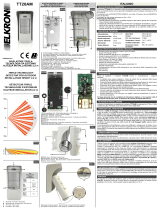 Elkron TT20AM Guide d'installation
Elkron TT20AM Guide d'installation
-
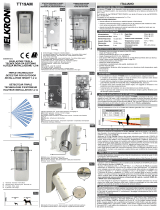 Elkron TT19AM Guide d'installation
Elkron TT19AM Guide d'installation
-
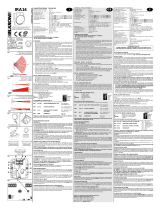 Elkron IRA 14 Guide d'installation
Elkron IRA 14 Guide d'installation
-
STEINEL IR WLS 1-GY Manuel utilisateur
-
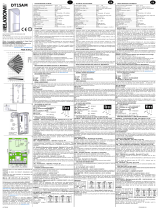 Elkron DT15AM Guide d'installation
Elkron DT15AM Guide d'installation
-
Bticino 4272 Mode d'emploi
-
CAME PROXINET Guide d'installation
-
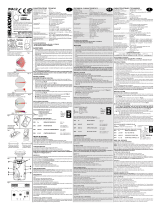 Elkron IMA 12 Guide d'installation
Elkron IMA 12 Guide d'installation
-
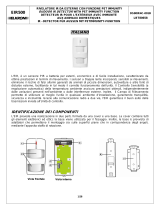 Elkron EIR500 Guide d'installation
Elkron EIR500 Guide d'installation
-
Bosch ISC-PDL1-WAC30G Manuel utilisateur

































